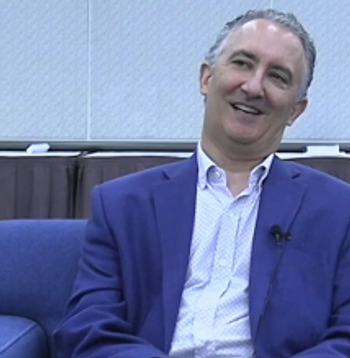
PsychiatricTimes.com
- PsychiatricTimes.com Vol 26 No 11
- Volume 26
- Issue 11
Advice to DSM-V: Integrate with ICD-11
I have elsewhere summarized the problems caused by the excessive and misdirected ambitions of the DSM-V effort.1 My purpose here is to suggest a different, more useful and attainable ambition for DSM-V-namely trying to integrate DSM-V and ICD-11 into one system. If successfully achieved, this would be by far the biggest accomplishment possible in this round of revision.
I have elsewhere summarized the problems caused by the excessive and misdirected ambitions of the DSM-V effort.1 My purpose here is to suggest a different, more useful and attainable ambition for DSM-V-namely trying to integrate DSM-V and ICD-11 into one system. If successfully achieved, this would be by far the biggest accomplishment possible in this round of revision.
DSM-IV and ICD-10 are very similar, but annoyingly different-and neither is clearly superior to the other. In fact, no system of descriptive psychiatric classification can ever be very much better than any other, just as no language can claim superiority over any other language. What we need now is to eliminate the totally unnecessary confusion of having 2 different classificatory languages.
This seemingly obvious goal has been surprisingly difficult to realize. After becoming chair of the DSM-IV Task Force, I was enthusiastic about the possibility of integrating our work with that of the World Health Organization to develop ICD-10. We had many joint meetings bringing together the DSM-IV Workgroup members with those who were working on ICD-10. Everyone involved had good intentions, but the effort to bring the 2 systems together fell far short. Although DSM-IV and ICD-10 are much more similar than were DSM-III and ICD-9, there were still a multitude of meaningless differences.
The obstacles to full integration were molehills that turned out to be mountains. By the time we started work on DSM-IV, ICD-10 was already in a fairly advanced form. The DSM-IV Task Force was faced with divided loyalties. We had a mandate to be conservative and adhere closely to DSM-III-TR to stabilize the diagnostic system. This conflicted with the goal of drawing closer to an ICD-10 draft that was close to DSM-III-TR, but also different in many small ways. Since the ICD-10 group had also grown understandably attached to their own new wordings, it was usually impossible to reach consensus on one unified criteria set.
The result was predictable. Although we were able to reconcile many of the more obviously unnecessary differences in criteria wording between DSM-IV and ICD-10, overall the 2 systems remained different in mostly trivial and arbitrary ways. It has been estimated that only 1 diagnosis (ie, transient tic disorder) has identical wording in both systems. A majority (roughly 80%) of the disorders have minor wording differences; roughly 20% have divergent definitions that reflect slightly different conceptions. All in all, however, none of these differences is really consequential. We would be better off having had only 1system, either DSM-IV or ICD-10, than we are having both.
What, if anything, can be done to bring DSM-V and ICD-11 into a more harmonious relationship? The best solution would be a clear division of labor. The DSM criteria sets have become the de facto international standard for research use. ICD-10, on the other hand, is often used outside the United States by mental health professionals and primary care clinicians. DSM-V could continue to provide its detailed criteria sets for clinical and research use. ICD-11 would provide brief prototypal narratives adapted from these criteria sets that would be much easier to use in those clinical settings where simplicity is a priority. DSM-V would give up on having its own primary care version, which is no great loss since the one developed for DSM-IV is not much used. ICD-11 would give up its research version, which is also not widely used. Neither system would lose anything essential and the world would be spared the current confusion. The DSM-V criteria sets and the ICD-11 prototypic descriptions would be at different levels of detail-nested and without conflict.
Is this possible? The signs to date do not encourage optimism that integration of the 2 systems will occur. Thus far, this has not been a priority for the DSM-V leadership, and there has been no concerted effort at harmonization. The original publication date for both DSM-V and ICD-11in 2012 would have meant that the clock had probably run out.
It is possible, however, that a new opportunity for integration may now open up. ICD-11 has been postponed until at least 2014. Although the DSM-V Task Force may not fully realize it yet, its planned publication deadline in May, 2012 appears impossible to meet and is also remarkably inconvenient given a coding change required in October 2013.2 If, as seems necessary, the DSM-V publication date is postponed for a year or more, there will be sufficient time to join the systems in a nested alignment. This would be the most welcome and enduring legacy of both DSM-V and ICD-11.
References:
References
1. Frances A. A warning sign on the road to DSM-V: beware of its unintended consequences. Psychiatric Times. 2009;26(8):1-9.
2.Frances A. Advice To DSM V. . . change deadlines and text, keep criteria stable. Available at
Newsletter
Receive trusted psychiatric news, expert analysis, and clinical insights — subscribe today to support your practice and your patients.

















